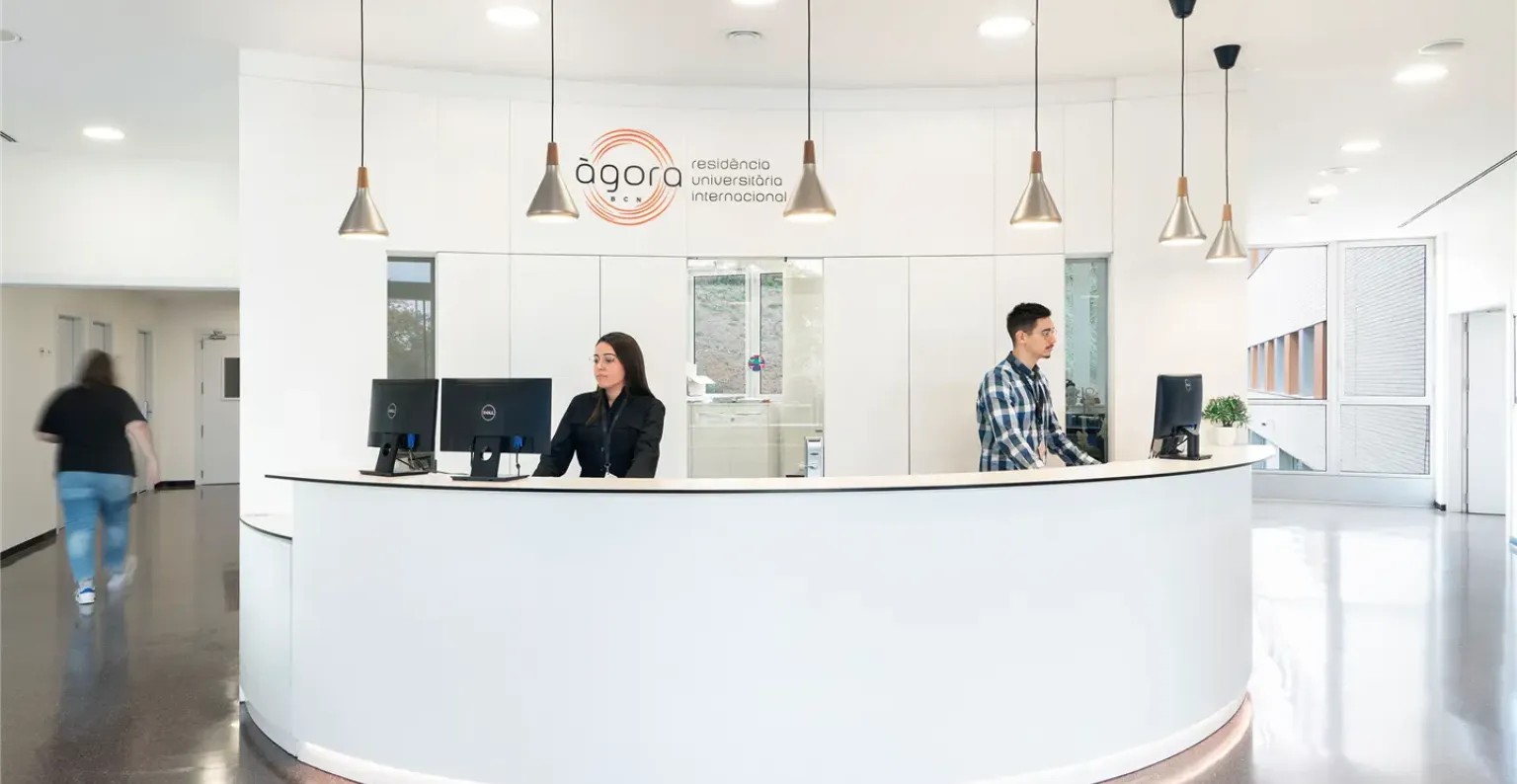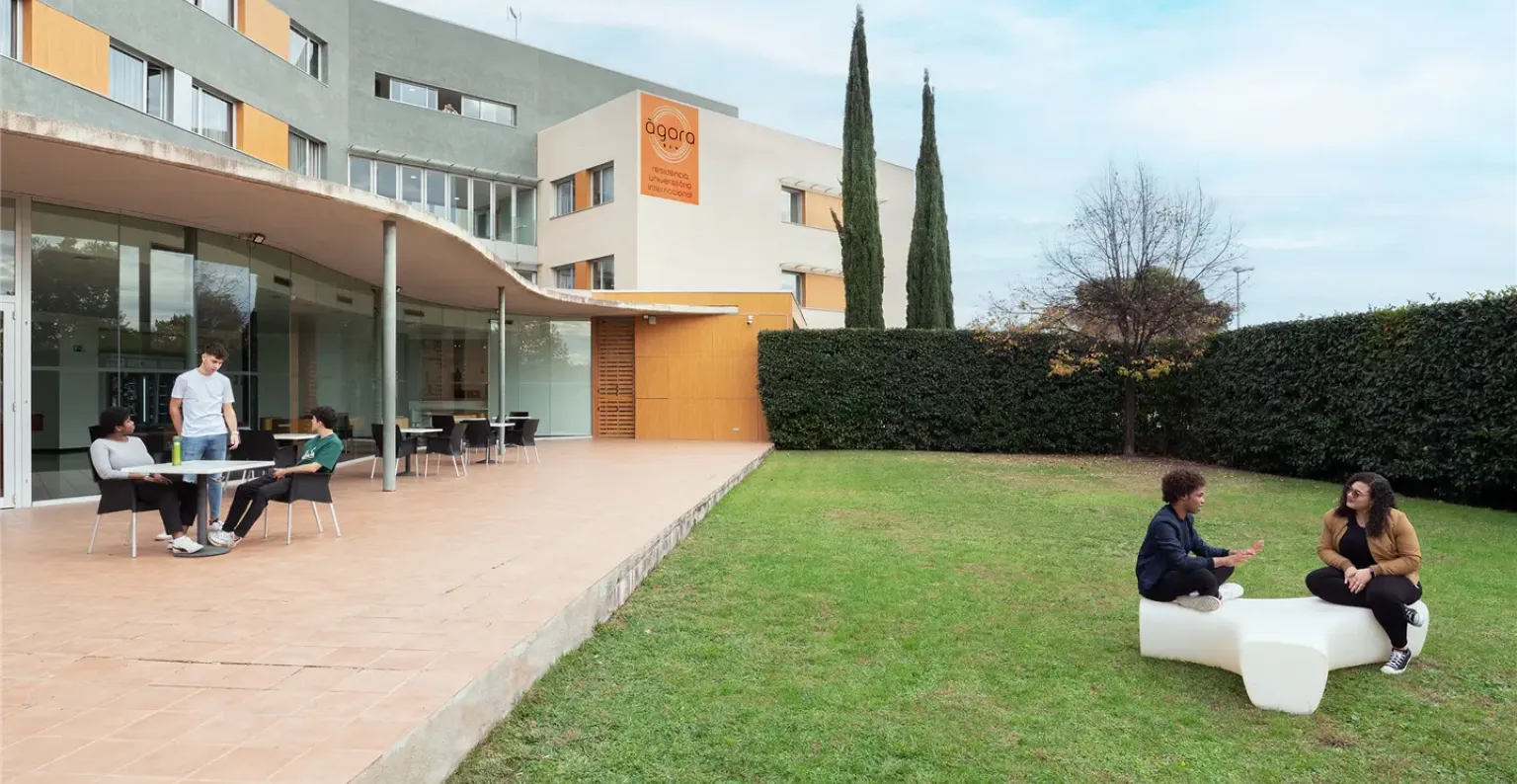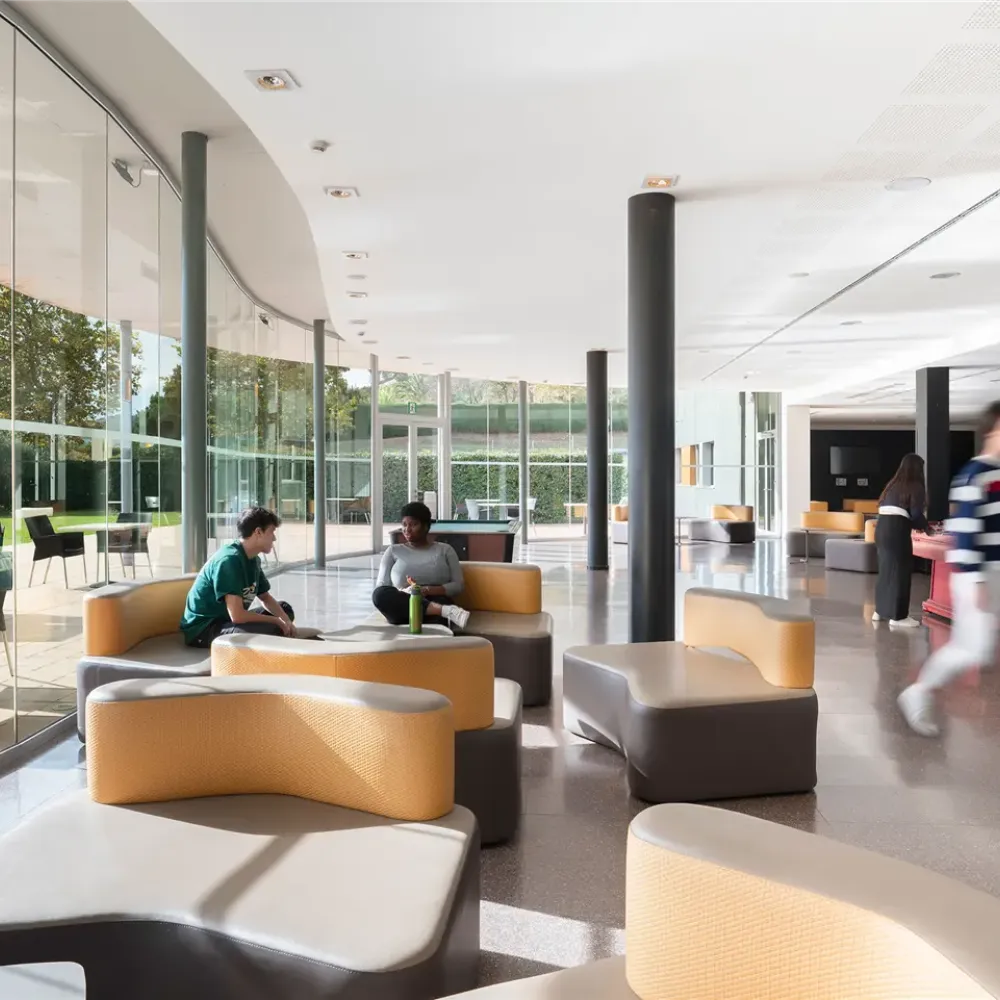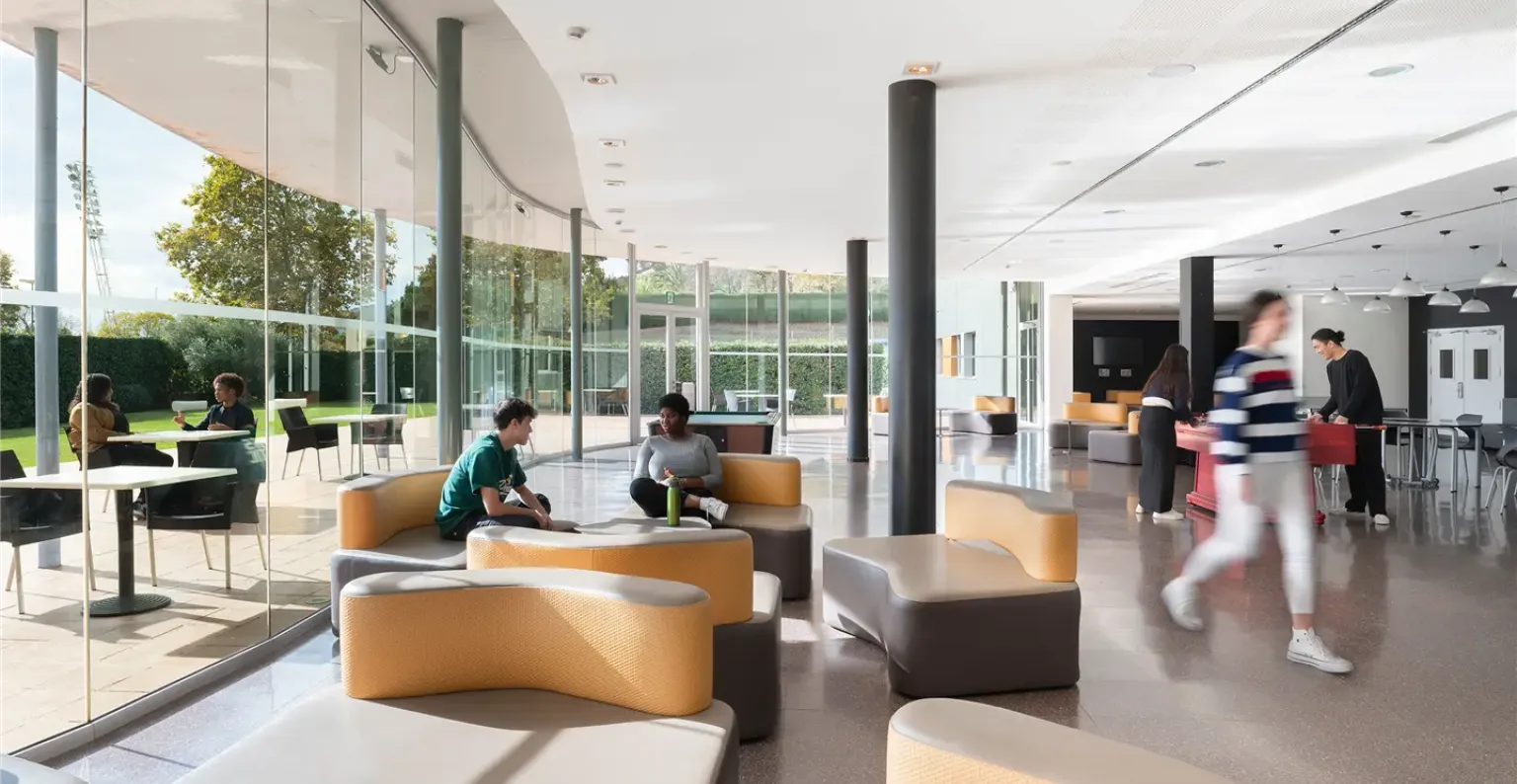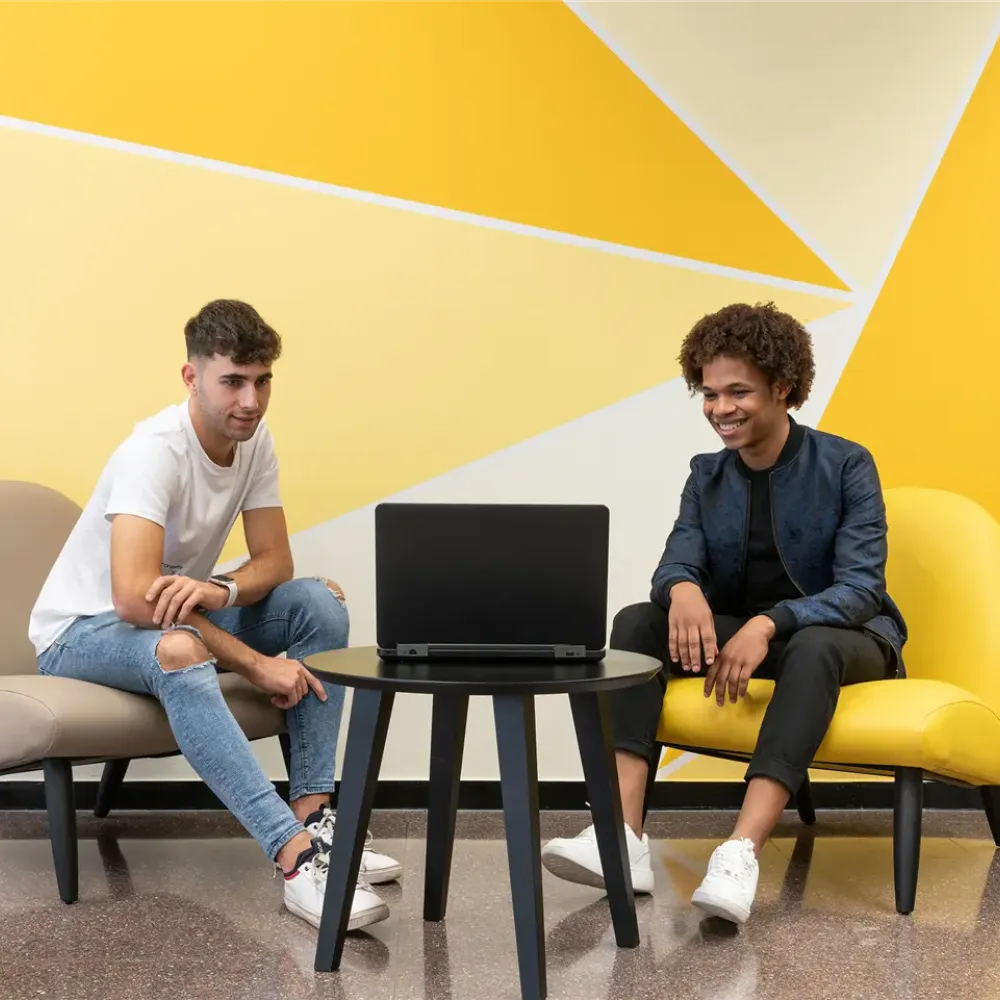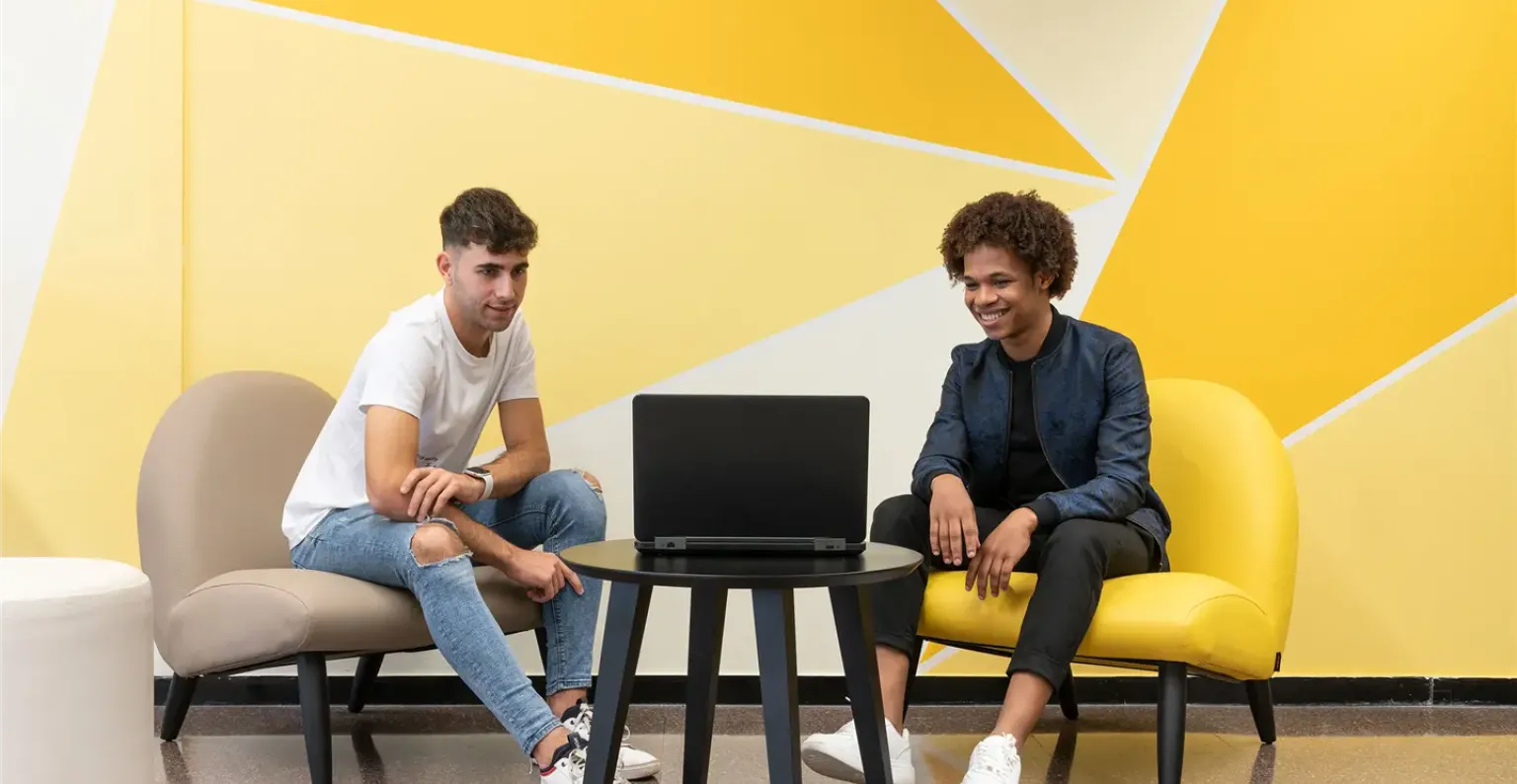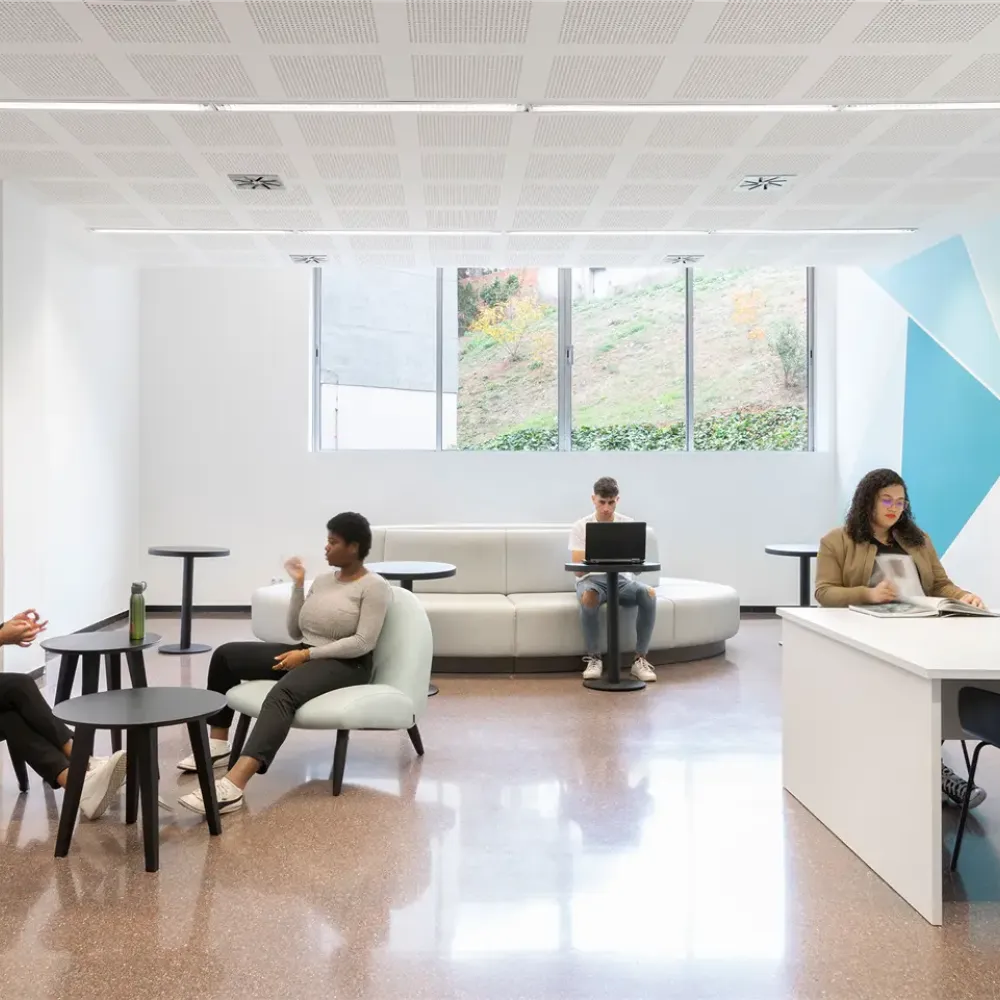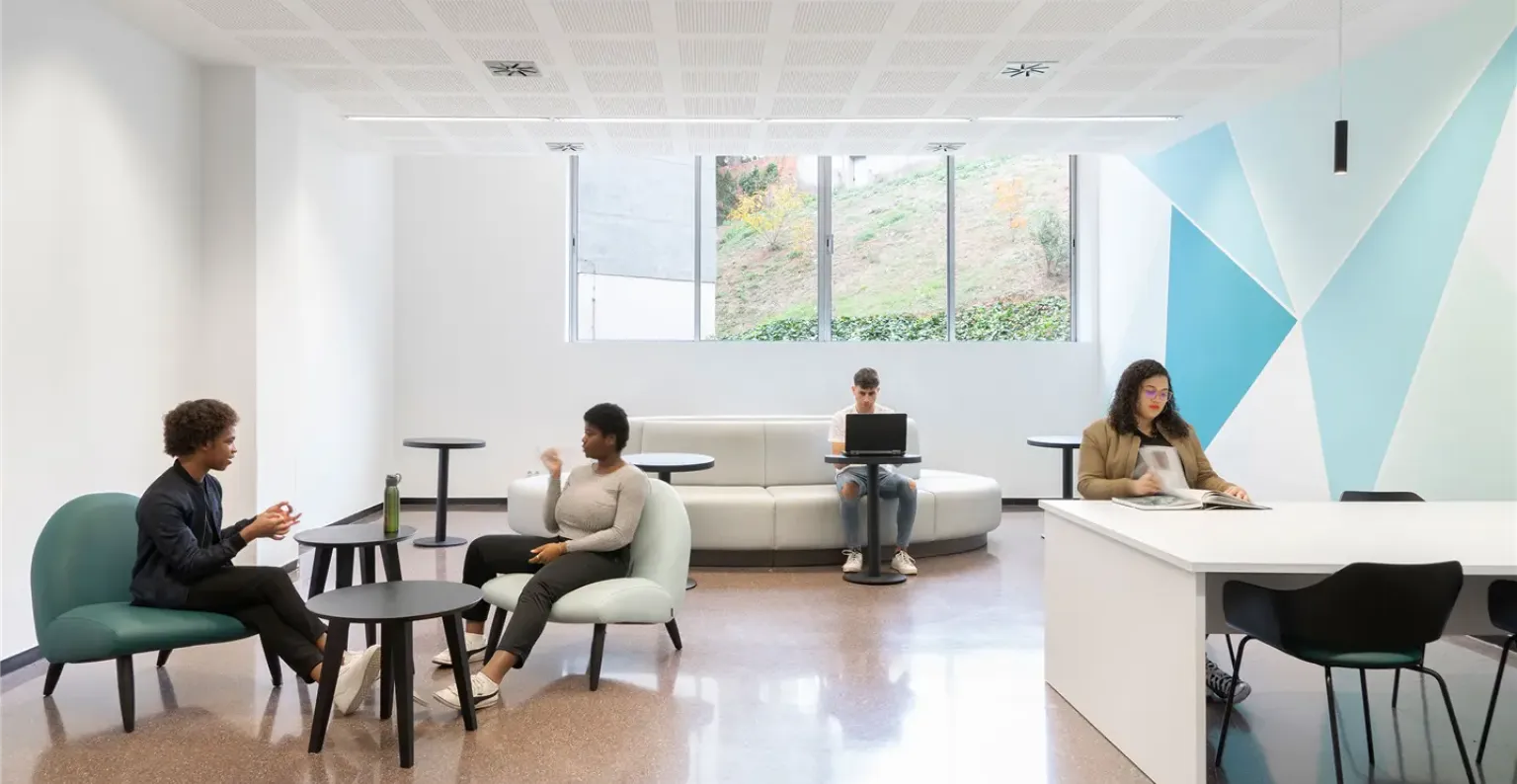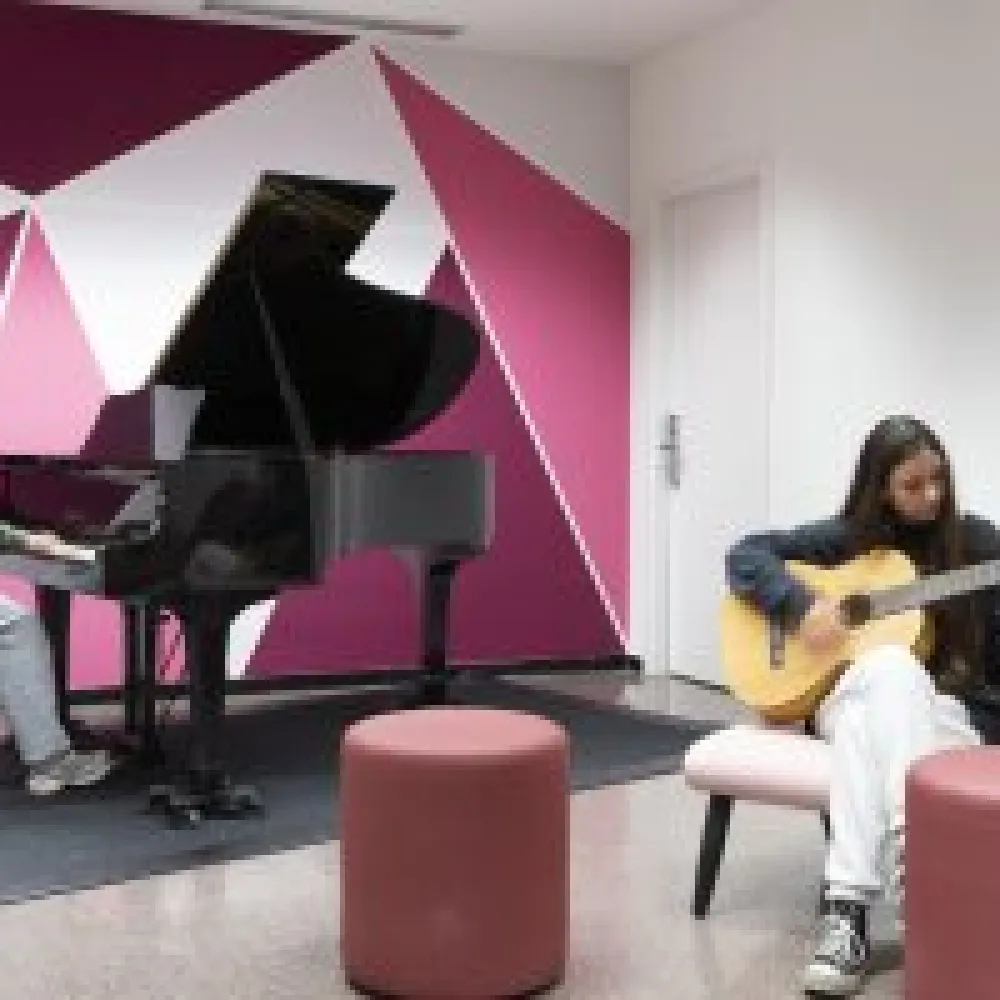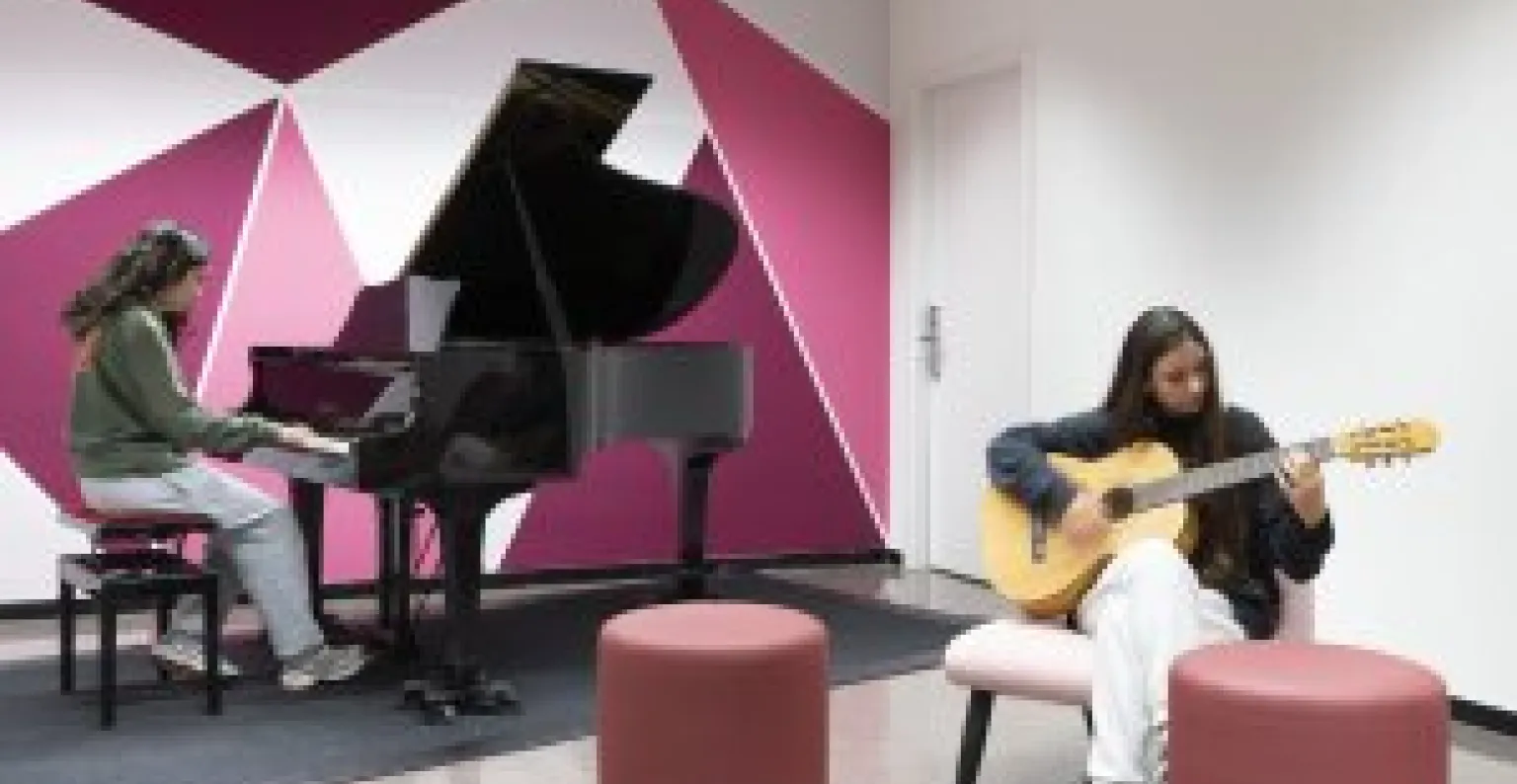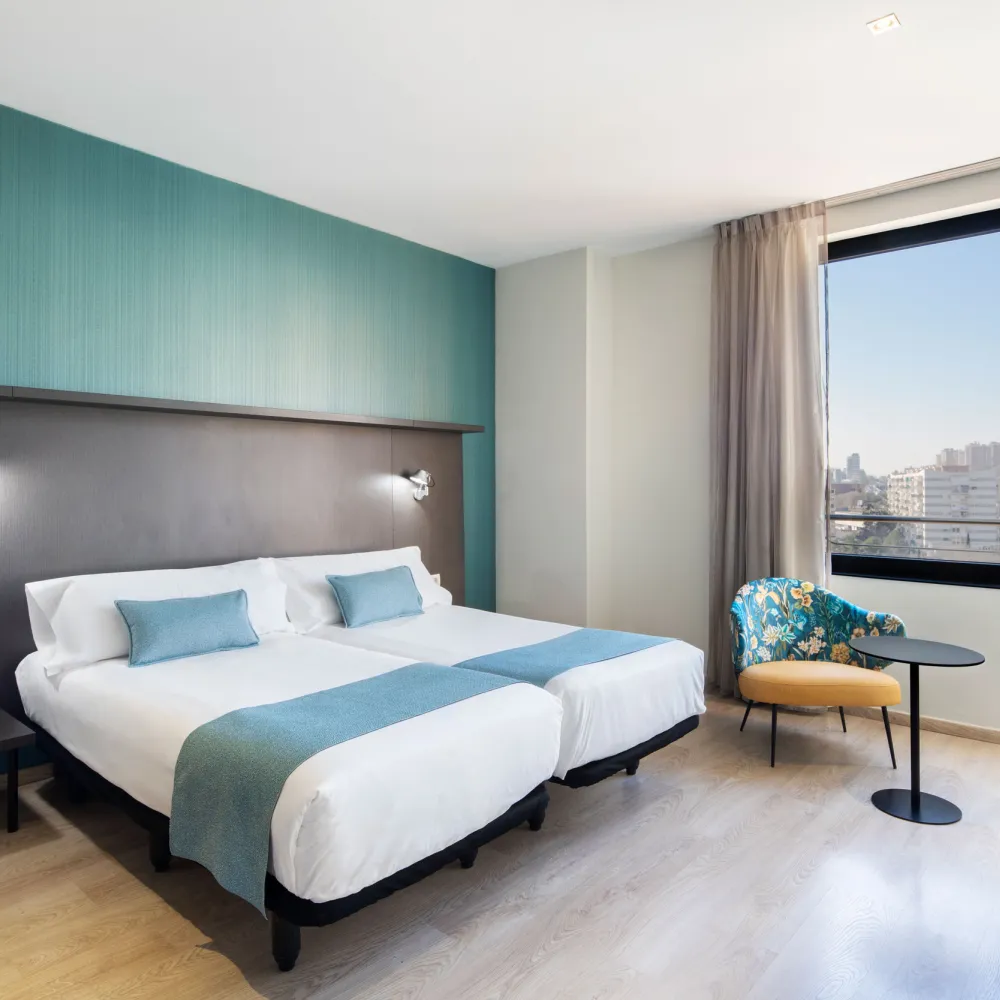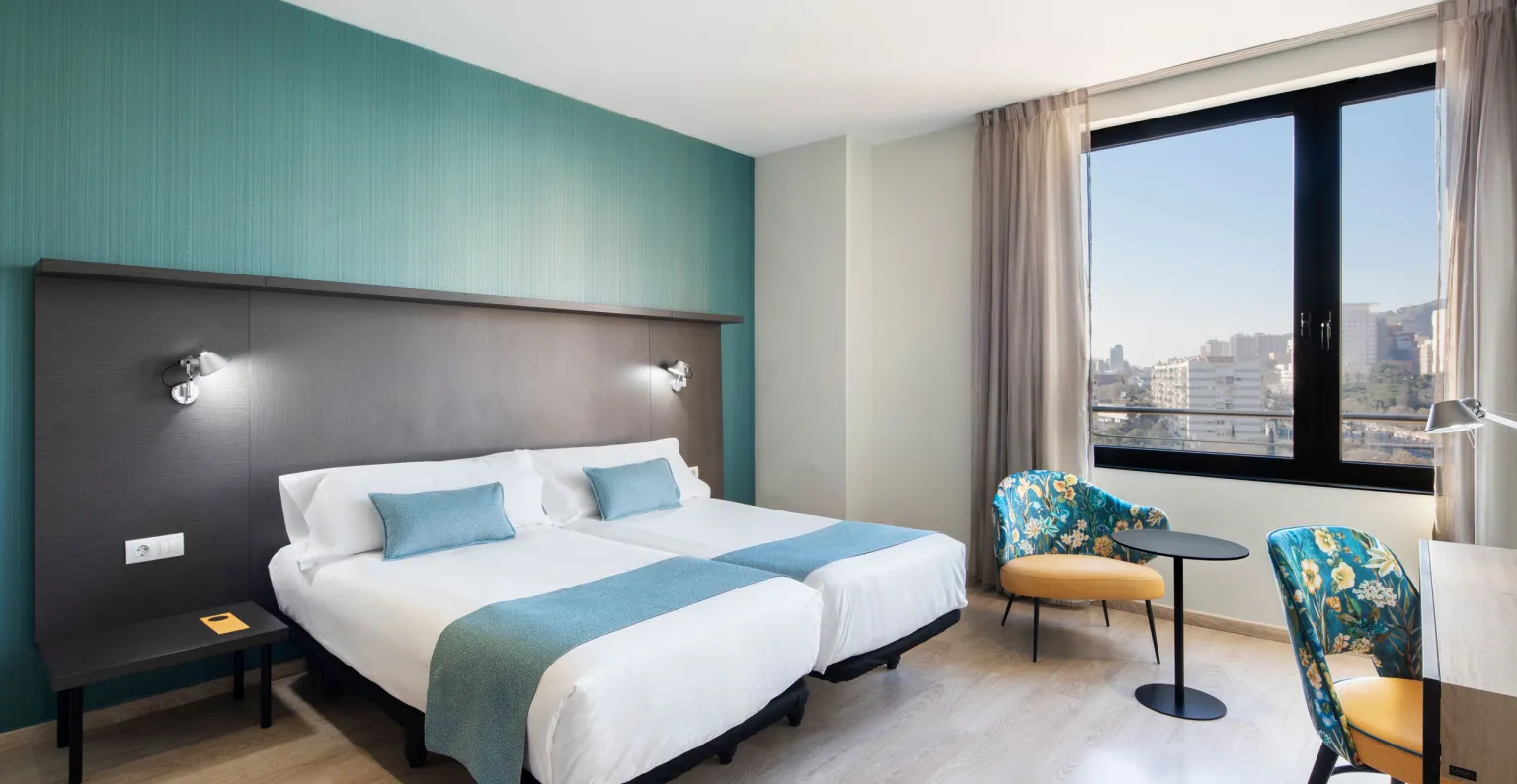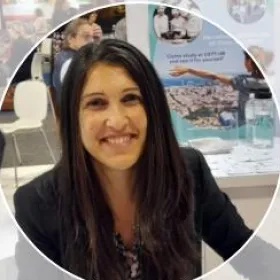Barcelona is calling you
Are you going to study at CETT? Start preparing your stay in Barcelona
We've prepared the following information so you have everything you need to know about living in Barcelona at your fingertips: paperwork, where to stay, how to get around the city, and much more!
Barcelona is considered a Smart City — a cosmopolitan and business-oriented city, thanks to its importance in finance, media, entertainment, art, international trade, gastronomy, and tourism.
Did you know that 23.6% of Barcelona’s population comes from outside Spain? This proportion has tripled since 2001!
The documentation you need to process
-
European Union countries
If you come from one of the Schengen Area countries, a VISA is NOT required.
A valid passport or national ID card from your country is sufficient.
For stays longer than 3 months: you must register with the Central Registry of Foreign Nationals (Registro Central de Extranjeros) to obtain a registration certificate and your NIE (Foreigner Identification Number).
- This must be done at one of the National Police Stations (Comisarías de Policía Nacional) in the province where you reside.
Do you need more information?
You can visit the University of Barcelona’s website, where you’ll find all the information you need.
-
Non-European Union countries
Students must obtain a student visa before arriving in Spain by applying through the corresponding Spanish Consulate or Embassy in their home country.
Less than 6 months: Short-term study visa (Type D "up to 180 days")
- If your studies last less than 6 months, you can apply for a 180-day student visa.
If you have any questions, you can visit the UB website or contact [email protected].
-
When and how to apply for the NIE
If your stay in Barcelona will exceed 6 months, you must apply for the NIE.
It is very important to start this process within the first 30 days of your stay in the Schengen Area (Austria, Belgium, Denmark, Finland, France, Germany, Iceland, Greece, Luxembourg, Netherlands, Norway, Portugal, Spain, and Sweden).
We recommend booking an appointment online as soon as possible through this link.
Procedure to apply for the NIE/TIE
Below is a list of the documents you will need:
- Original passport
- Copy of your health insurance
- Printed confirmation (screenshot) of the online appointment
- Completed Ex-17 form
- Completed and paid 790 form (you can pay at a bank office)
- Original letter of admission from CETT-UB
- Empadronamiento (city registration) or printed confirmation (screenshot) of the online appointment
- Photocopies of the following passport pages:
- Personal information page with your photo
- Page showing your visa
- Page with the entry stamp of the Schengen country you first arrived in
- Original visa with temporary NIE number
After applying for the NIE/TIE
The police department will give you a temporary NIE number — don’t lose it!
After submitting the required documents, you will be able to collect your TIE one month later. You’ll need to present the payment receipt and your temporary NIE number.
-
How to register your address
This procedure allows you to obtain a residence certificate signed by the City Council Secretary, which certifies your registration at a specific address in the city of Barcelona.
- If you live in a student residence, you must obtain a letter verifying that you are living there.
- If you live in an apartment, you must bring the rental contract and a copy of the landlord’s ID.
- Bring these documents, along with your original passport and visa, to one of the OAC offices (Oficines d'Atenció al Ciutadà).
- Check the instructions by clicking the “Register” button on the following website and book your appointment through the link provided.
For stays longer than 6 months, a long-term student visa (Type D) and a TIE (residence card) are required.
- If your studies last more than 6 months, you will be granted a “student stay” visa (Type D).
- You must obtain this visa in your country of residence, at a Spanish consulate.
- Once you arrive in Spain, you must go to the police station within 30 days to apply for your student card (TIE). If you don’t, you will only be allowed to stay legally for three months. The card is valid for a maximum of one academic year and can be renewed annually until you complete your studies.
Where to stay in Barcelona?
At the Àgora BCN Residence Hall, you'll feel right at home! This university residence is part of CETT and is located less than a 10-minute walk from the academic center and just fifteen minutes by public transport from the city center of Barcelona.
At Àgora BCN, you’ll enjoy 24-hour service and the following facilities:
- Single or double rooms, spacious and bright, with a private bathroom, air conditioning, heating, study desk, wardrobe, internet cable connection, and TV antenna.
- Weekly cleaning and towel and bedsheet replacement.
- Study rooms with natural light, ideal for individual or group work (with computers and printers).
- Dining service with vegetarian and gluten-free options. You can choose between half board and full board.
- Sports and leisure areas: A TV and games room (with foosball, ping-pong, and pool tables), a fitness room, and outdoor spaces for football, basketball, badminton, or volleyball — plus a music room!
If you need more information, you can visit their website.
If you’d like to explore other housing options, we suggest the following websites:
Housing
- Student Residence Hall: Àgora BCN International University Residence Hall
- Location: 7 min walk from CETT and metro station
How to get around Barcelona?
Getting around Barcelona is very easy, and you have many options — here are some tips!
Barcelona is the 11th safest city in the world, but we recommend that, especially in the city center, tourist areas, and crowded places, you keep a close eye on your belongings and never leave them unattended.
You’ll be able to pay by credit card in most establishments, so there’s no need to carry large amounts of cash.
Below, we’ll explain the different types of transportation you can use in Barcelona.
-
Metropolitan transport
In this link, you can check the different types of transportation you can use to get around the city: metro, bus, nitbus (night buses operating between 10:00 p.m. and 6:00 a.m.), tram, commuter trains, taxi, and other services.
Important: To find out which travel card best suits your needs, you can find all the information on this website. For example, if you’re under 25 and plan to use public transport regularly, we recommend the T-Jove pass.
-
Bicing
Looking for a sustainable, simple, and practical way to get around? Bicing is a bike-sharing system (with both mechanical and electric bikes) offering over 7,000 bicycles and 500 stations — and the city has more than 200 km of bike lanes!
You can find more information here.
*Important: To register, you must have a valid DNI or NIE. -
How to get to Barcelona from Josep Tarradellas Barcelona-El Prat Airport
To get to Barcelona from Josep Tarradellas Barcelona-El Prat Airport, there are several options available depending on the area where you’ll be staying:
- Bus: There are several buses that run from the airport to Barcelona, such as line 46, which ends at Plaza Espanya. There are also night buses like the N17 and N18. You can check all the buses that serve the airport here.
- Aerobús: This service offers a fast connection to the city center, with buses running approximately every 7 minutes from both terminals toward Plaça Catalunya. It’s a more direct option than regular Barcelona buses, making only four stops (if departing from Terminal 1) or five stops (from Terminal 2). If you're interested, here is the link.
- Metro: The metro runs every day from 5:00 a.m. to midnight, until 2:00 a.m. on Fridays, and all night on Saturdays. You can take the orange line (L9) toward Zona Universitària and transfer to another line that takes you to your destination. For more information, click here.
- Train: The Rodalies R2 Nord train departs from Terminal T2 of El Prat Airport, has three stops in Barcelona, and runs every 30 minutes. For more information, you can visit this website.
- Taxi: You’ll find taxi ranks in front of the arrivals areas at Terminals T1 and T2. Fares vary depending on the day, time, and destination. We recommend checking the official website so you can plan your trip accordingly.
- Welcome Pickups: If you prefer to have a driver pick you up and wait for you at the exit with a sign showing your name, you can book a pickup through the following link.
Immerse yourself in the local culture from day one
At CETT-UB, we organize a variety of activities to help you feel integrated from the very first day of your stay.

Welcome sessions
Each semester, we organize a welcome session for international students, where we introduce you to the university, its programs, administrative services, technical support, and exam procedures. During this session, you'll receive all the technical information you’ll need for your stay at CETT and in Barcelona.
It’s also a great opportunity to meet students from all over the world, as we prepare fun activities to help you break the ice and connect with others.

Buddy Program
To ensure that all international students fully experience CETT, we’ve developed this program to help you make the most of your stay in Barcelona.
Who are CETT-UB Buddies? They are fellow students — just like you! You’ll be in contact with your local buddy before arriving in the city and before your classes begin at CETT-UB, so you’ll already have a familiar face when you get to the university.
Your buddy will help you understand how CETT-UB works, what resources are available to you, how to get around the city, meet other students, and learn about the local culture, languages, gastronomy, and more.

Cultural newsletter
We’ve created a newsletter featuring a wide range of activities to enjoy in the city.
Each week, you’ll receive a new edition highlighting the events taking place that week — from temporary exhibitions and concerts to sports events and markets. Our goal is to give you a complete view of Barcelona beyond the typical tourist spots.
The newsletter is sent via email, but you can also find it on our Instagram account. So don’t forget to check your inbox regularly and follow us on Instagram at @cett_international to stay up to date with the latest news and events.
Places of interest in Barcelona
Before your arrival in Barcelona, we recommend that you review the following pages about the city's history, climate, customs, spoken languages, and information on safety, coexistence, and health.
Barcelona was the 17th most visited city in the world in 2021. It has over 55 museums, and the Barcelonès region is home to 9 UNESCO World Heritage Sites.
Want to discover them all? You can check them out below!
-
The Sagrada Família
The spectacular basilica designed by Antoni Gaudí is still under construction — more than 140 years after the first stone was laid — and it is expected to be completed in 2026.
-
Casa Milà
Better known as La Pedrera, it was commissioned from Antoni Gaudí in 1905 by Pere Milà and Roser Segimon, and it is now considered the architect’s most iconic civil building.
-
Sant Pau Art Nouveau Site
Formerly known as the Hospital de la Santa Creu i Sant Pau, it was designed by Lluís Domènech i Montaner. It is the largest Art Nouveau complex in Europe and an outstanding example of Catalan Modernism, considered one of the most remarkable buildings of Barcelona’s modernist movement.
-
Casa Vicens
Manel Vicens i Montaner commissioned his summer residence in the village of Gràcia from Antoni Gaudí, and it is now considered his first masterpiece.
-
Palau de la Música Catalana
Built by Lluís Domènech i Montaner (who also designed the Sant Pau Art Nouveau Site) as the headquarters of the Orfeó Català in the center of Barcelona. It is the only concert hall to have been declared a UNESCO World Heritage Site and is a prime example of Catalan Modernism.
-
Palau Güell
Eusebi Güell was an industrialist, politician, and patron of the arts and culture. He commissioned this building from Antoni Gaudí. In 1945, his daughter donated the Palau to the Provincial Council of Barcelona so that the building could be preserved and opened to visitors.
-
Park Güell
Eusebi Güell also commissioned Antoni Gaudí to design a residential estate for wealthy families with 60 plots. However, due to difficulties in selling them, it eventually became the city’s most famous park and a major tourist attraction.
-
Crypt of the Colònia Güell
Considered a monumental model of the Sagrada Família, it is an unconventional example that uses colorful materials and textures reminiscent of vegetation and the earth, blending harmoniously with the small forest that surrounds it.
-
Casa Batlló
Josep Batlló commissioned Antoni Gaudí to demolish the building and gave him full creative freedom to construct a new one. However, Gaudí didn’t demolish it — instead, he carried out a full renovation, adding extraordinary details such as the façade, which was inspired by marine life.

Catalan gastronomy
Catalan cuisine is part of Mediterranean gastronomy. Its heritage dates back to medieval times and is still rooted today in local products and regional identity — using seasonal and locally sourced ingredients.
Below you’ll find links to learn more about:
- Catalan cuisine and its most traditional dishes
- Barcelona’s gastronomic revolution
- Markets you can explore throughout the city
Contacts you should save
Below you’ll find the main CETT-UB contacts to keep in mind during your stay in Barcelona.
Other emergency contacts
Emergency phone numbers
- General emergencies (for situations requiring Police, Firefighters, Medical Services, or Ambulance): 112
- Salut Respon (for non-emergency medical questions or consultations): 061
- Police (Mossos d'Esquadra): 088
- Barcelona Municipal Police (Guardia Urbana): 092
- Fire Department: 080
If you have any issues with your credit card and/or need to block it, you can call the following numbers:
- American Express: 900 99 44 26
- MasterCard: 300 37 12 31
- Visa: 900 99 11 24
You can also call Barcelona’s free citizen service helpline: 010

